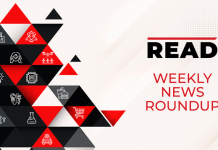Welding is a widely used process across various industries, allowing for the joining of metals and the creation of strong and durable structures. However, the success of any welding project relies not only on the skills of the welder but also on the quality and suitability of the materials used. This is where welding consumables come into play.
Welding consumables refer to the materials and equipment necessary for the welding process. These include electrodes, filler metals, shielding gases, fluxes, and other auxiliary materials. According to Extrapolate, the global welding consumables market is estimated to reach $22.12 billion in 2028, exhibiting a compound annual growth rate (CAGR) of 5.58%. Let’s learn more about this billion-dollar industry.
Understanding Welding Consumables
The term “welding consumables” describes the materials used in the welding process that are melted or consumed during the procedure. To create a sturdy and dependable weld junction between metal components, several ingredients are necessary. These consumables include, among other things, shielding gases, welding rods, wires, fluxes, and electrodes.
Every kind of consumable has a distinct function throughout the welding process and is selected according to the particular welding technique, kind of metal, and desired weld characteristics. Some of the prominent companies at the forefront include Lincoln Electric Company, KOBE STEEL, ESAB, etc.
Types of Welding Consumables
Welding consumables encompass a diverse range of materials, each serving specific purposes in the welding process. From flux-cored wires to welding electrode types, these consumables play a critical role in achieving high-quality welds and meeting specific requirements.
- Flux-Cored Wire: This consumable for welding has an electrode that is empty or tubular and filled with flux compound. When employed in flux-cored arc welding (FCAW) procedures, shielding gas is not always necessary. The wire’s flux creates a shielding gas that protects the weld pool, allowing it to be used outdoors or on hazardous materials. Flux-cored wire has the benefit of having strong base metal penetration and quick deposition rates, which makes it adaptable to a wide range of welding applications.
- Consumable Electrodes: Used in stick, MIG, and flux-cored arc welding, consumable electrodes are consumed during the welding process and form part of the weld bead. Common types include stick electrodes, which can be heavy-coated, shielded arc, or light-coated. Light-coated electrodes have a thin surface coating, while shielded arc electrodes produce slag due to their mineral coating.
- Non-Consumable Electrodes: Primarily used in TIG welding, non-consumable electrodes are composed mainly of tungsten, which does not melt during welding due to its high melting point. These electrodes provide an electric arc for welding without being consumed, essential for applications requiring precise control and high-quality welds.
- Non-Consumable Electrode Welding: Also known as gas tungsten arc welding (GTAW) or TIG welding, this process uses a non-consumable electrode to generate an arc for welding. Typically made of tungsten, the electrode does not melt during welding, providing heat and controlling the welding arc. This method is commonly used for welding thin sections of stainless steel, aluminum, and other non-ferrous metals, as well as for precision welding applications.
- Consumable Electrode Welding: This category includes processes like stick welding, MIG welding, and flux-cored arc welding, which use consumable electrodes that are consumed during welding. These electrodes are chosen based on their compatibility with the base metals being welded and must be chemically compatible. Consumable electrodes melt and mix with the weld, creating a stronger bond and helping eliminate impurities during the welding process.
Benefits of Welding Consumables
Here are some key advantages:
- Strong and Reliable Welds: Consumables, such as filler metals, ensure a strong and reliable bond between the metals being joined. They fill the gap between the base metals, providing structural integrity and enhancing the overall strength of the weld.
- Improved Weld Quality: The use of appropriate consumables helps achieve high-quality welds with desirable characteristics, such as good penetration, minimal defects, and proper fusion. This ensures that the weld meets the required standards and performs well under various conditions.
- Enhanced Welding Performance: These are designed to optimize the performance of specific welding processes. They contribute to stable arc formation, better control of heat input, improved weld bead appearance, and reduced spatter, resulting in smoother and more efficient welding operations.
- Versatility and Adaptability: These are available in various forms, compositions, and sizes, allowing welders to choose the most suitable option for different applications and materials. This versatility enables welders to adapt to specific project requirements and achieve desired outcomes.
- Increased Productivity: The proper selection of consumables can significantly improve productivity. Consumables that offer higher deposition rates, faster travel speeds, and longer operating life reduce welding time, increase efficiency, and minimize downtime for consumable replacement.
- Cost Savings: While high-quality consumables may have a higher upfront cost, they can provide long-term cost savings. Optimal consumables with longer life and better performance help reduce replacement costs, minimize downtime, and improve overall productivity, leading to potential cost savings in the long run.
Winding Up
Welding consumables are essential because they solve problems for the industry, boost productivity, and satisfy application-specific needs. Through the appropriate selection and utilization of consumables, welders may guarantee sturdy and dependable weld joints, hence augmenting the prosperity and longevity of diverse sectors. These consumables are vital elements in the welding process because they facilitate effective and superior welding operations.
Browse More Posts:-
ADAS Vehicles Market
ADAS Vehicles Market Share
ADAS Vehicles Market Trends



